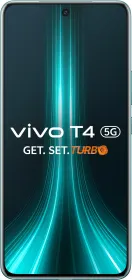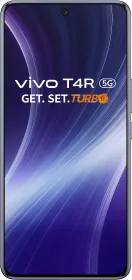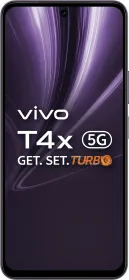Imagine the excitement of being told that soon you’ll be able to stream videos on your device without needing a SIM card or an internet connection! This growing demand for tailored, on-demand content has inspired the development of a groundbreaking technology known as Direct-to-Mobile, or D2M, which will enable this type of streaming.
This innovative concept is rapidly becoming popular across the nation, driven by the fast-paced advancements in technology. D2M technology has the potential to be beneficial in multiple sectors, although it also presents certain challenges. In this guide, we will explore what D2M is, how it operates, its applications, the obstacles it encounters, and the companies poised to launch it in India shortly. Essentially, if you’re looking for comprehensive information about D2M, you’ve come to the right place.
ALSO SEE: APAAR ID FAQ: What is it? Key Features Explained and Guide on How to Create Yours (Step-by-Step)
What is Direct-to-Mobile (D2M) Technology?
Direct-to-Mobile Technology is a technique for delivering content straight to smartphones via broadcast signals. It leverages broadcast networks, such as those used for television and radio, to transmit content directly to mobile devices, circumventing conventional cellular or internet data networks. This approach is effective for simultaneously providing the same content to numerous users, alleviating the strain on cellular networks, and is particularly suited for live events or widely viewed broadcasts.
To enable this feature, smartphones must possess certain hardware capable of receiving and decoding broadcast signals, necessitating new manufacturing standards. In addition to video streaming, D2M can provide high-quality audio streaming, as it is not reliant on the fluctuating speed and stability of an internet connection.
ALSO SEE: Reliance Jio Coins FAQ Guide: Usage, Earning Jio Coins, Value & More
How does Direct-to-Mobile Tech Work?
The Direct-to-Mobile technology enables smartphones to receive terrestrial digital TV by merging broadcast and broadband capabilities. It’s similar to how users can listen to FM radio on their devices, thanks to the phone’s internal receiver capturing radio signals. Additionally, multimedia content can be directly streamed to phones through D2M.
ALSO SEE: Extending the Lifespan of Your Solar Panels in India’s Diverse Climates: A Comprehensive Guide
What has the GOI done to implement Direct-to-Mobile?
To implement the homegrown tech effectively, the GOI declared that 19 cities will soon host trials of domestic Direct-to-Mobile technology made by Saankhya Labs and IIT Kanpur. The viability of this technology was investigated by the Department of Telecommunications and India’s public service broadcaster, Prasar Bharati.
ALSO SEE: A Guide to Uber For Teens: What is it, How is it different from regular Uber Rides & How to Use
Opportunities for Direct-to-Mobile in India

The Indian Government has projected that there are over 480 million homes in the country, with approximately 200 million equipped with televisions, leaving a significant number without. Presently, there are 800 million smartphones in India, and this figure is expected to rise to 1 billion shortly. This indicates that soon, nearly everyone will possess a smartphone, allowing Direct-to-Mobile services to effectively connect with this audience in the broadcasting sector.
Furthermore, approximately 69% of the content viewed by users on mobile devices is in video format. As a result, the amount of data and content consumed is expected to rise significantly when it reaches around 800 million mobile phones, in contrast to the 200 million households that access it through televisions.
ALSO SEE: A Guide To BHIM UPI 3.0: New Features, How to Use It & More
Usage of Direct-to-Mobile Tech in India

- The Direct-to-Mobile Technology can facilitate public services such as health, education, and information about various welfare programs of the Government of India directly to the citizens. It has the potential to reach a large audience without intermediaries, ensuring extensive penetration. D2M can also inform the public about health initiatives and government schemes.
- D2M has the potential to be an exceptional technology for public broadcasting. It is particularly significant for a developing country like India, where the government faces challenges such as disaster management and the spread of misinformation. By utilizing D2M, the Government of India can effectively counter false information promptly, preventing potential harm. Additionally, it can facilitate quicker assistance to areas affected by disasters.
- Direct-to-Mobile is a cost-effective solution when compared to mobile data rates and broadband subscriptions. With D2M, users in India can enjoy unlimited data for a fixed monthly fee.
- Additionally, Direct-to-Mobile allows for the streaming of live sports, news, and other essential content directly to mobile devices, ensuring smooth playback without any delays and without consuming internet data.
- D2M enables companies to create tailored messages for each user, fostering more engaging and significant interactions. It also facilitates real-time communication, empowering businesses to deliver timely updates, promotions, and alerts.
- The e-commerce sector in India is experiencing significant growth, and D2M presents a valuable opportunity to enhance customer engagement. Through order confirmations, shipping notifications, and tailored product suggestions via D2M, a smooth shopping experience can be achieved.
- The Direct-to-Mobile feature will also provide advantages to the financial sector in India. Banks and financial institutions can utilize D2M channels to deliver real-time account updates, financial guidance, and transaction notifications.
ALSO SEE: Guide to BSNL VIP Numbers: What are they, e-Auction Process, Charges & More
Challenges Faced by Direct-to-Mobile in India

- One of the gravest challenges to D2M implementation was regarding the integration of chipsets in smartphones to support the feature. But the relief is that it is a one-time cost. Moreover, Saankhya Labs, which has created chipsets and dongles, claims that the addition of new chips won’t have a significant impact on device prices. Their statement says, “The chips will cost less than Rs. 150 with large volumes, about 5-10 million, and the external dongles (USB DTC Receiver Dongle) would cost about Rs. 500-Rs. 700.”
- Another major challenge to implementation was bringing stakeholders on board. The proposal for D2M faces opposition from tech companies like Samsung, Ericsson, Qualcomm, Nokia, and telecom operators. Bringing smartphone makers, telecom providers, business houses, and regulatory bodies on board is a task. Specifically, telecom operators feel threatened by the proposition as their hegemony might be challenged.
- Infrastructure requirements, ecosystem, and viability concerns, and increased costs were also major challenges to Direct-to-Mobile technology.
ALSO SEE: Hyundai Creta Electric FAQ Guide: Every Related Question Answered
Companies bringing Direct-to-Mobile to India
Direct-to-Mobile technology is set to launch in India at the World Audio-Visual & Entertainment Summit (WAVES) 2025, which will be held at the Jio World Centre in Mumbai on May 1st, with HMD and Lava leading the initiative.
HMD launching D2M

HMD has collaborated with Free Stream Technologies and various D2M partners, intending to unveil Direct-to-Mobile phones in India from May 1st to 4th. Following the launch, D2M-enabled services will provide users with access to entertainment, educational resources, emergency alerts, and sports broadcasts. HMD considers itself one of the pioneering manufacturers prepared to introduce Direct-to-Mobile capabilities to users in India after successful testing.
Lava launching D2M
ALSO SEE: UPI in India: Your Go-To FAQ Guide
Along with HMD, homegrown brand Lava has also announced its Direct-to-Mobile feature phones, made in partnership with Tejas and Free Stream Technologies. It will lead to a major shift in the feature phone market. Lava states that the D2M feature phones will support India’s Make in India initiative and use terrestrial TV broadcast airwaves to deliver Live TV, OTT video, audio, and text messages without needing WiFi.
The device has been developed by Lava’s internal research and development team in collaboration with Tejas engineers, utilizing the MediaTek MT6261 chipset and incorporating Saankhya’s SL3000 software receiver chip. Key features include a 2.8-inch QVGA display, GSM capabilities for voice communication, a 2200mAh battery, and a UHF antenna for television reception. This phone aims to provide information and entertainment to underserved populations in rural and low-income regions. Details regarding the pricing and availability of the D2M feature phones are yet to be revealed, but further information will be shared at the WAVES 2025 summit scheduled for May 1-4 in Mumbai.
You can follow Smartprix on Twitter, Facebook, Instagram, and Google News. Visit smartprix.com for the latest tech and auto news, reviews, and guides.




































